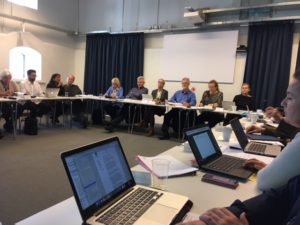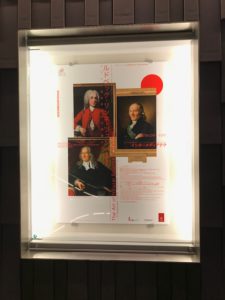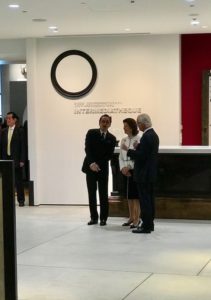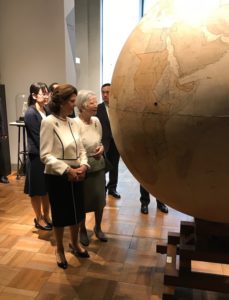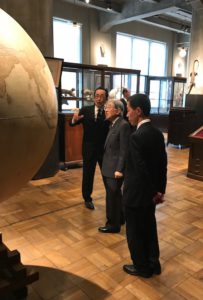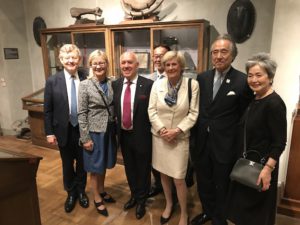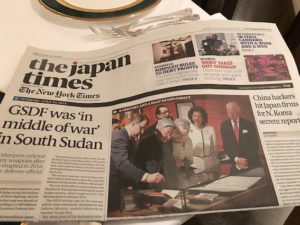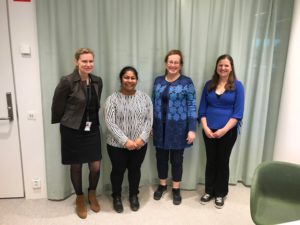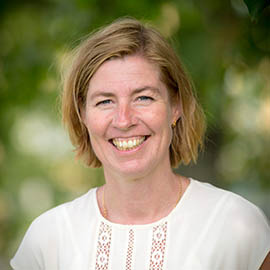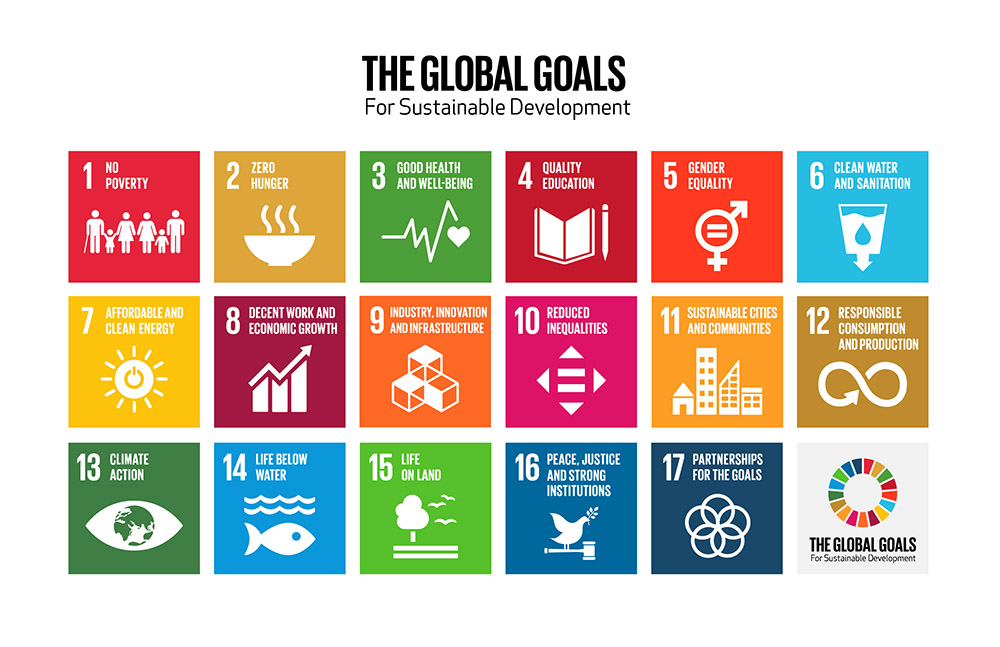(Original Swedish post published 27 March.)
On 4 January 2018, the government inquiry on governance and resources (STRUT) presented a proposed general model. The proposal is intended to serve as a basis for continued dialogue and is described in the report as an outline designed to encourage different stakeholders to present comments that will help to move the work of the inquiry forward. The issues that the inquiry is dealing with are important and in this response, Uppsala University would like to offer some comments on the proposed model.
On one level, it is easy to sympathise with the starting points and assumptions formulated for the general model. Core academic values, closer links between education and research, the emphasis on a long-term perspective, trust and agreements – these factors are rightly emphasised as fundamental principles for a governance and resources system for the higher education sector.
Despite this, our position on the proposed model is fundamentally critical, for two main reasons: first, in our view, the inquiry has so far failed to address certain quite essential issues; and second, in practice the proposal opens the way for increased micro-management and increased monitoring of the activities of higher education institutions.
Although some of the problems described are very recognisable, the level of precision and analysis is inadequate to justify the sweeping changes that the inquiry proposes. Uppsala University does not find that the inquiry has managed to build a convincing case for the need for a completely new model of governance.
Several essential points need to be resolved – if not in detail, at least in principle – before a general governance model can be set out. In this respect, the inquiry has put the cart before the horse.
These essential points include the following:
- Are concepts such as ‘agreement’ – and ‘trust’ – at all meaningful in a context where higher education institutions are not independent legal entities and where the government appoints both the majority in the board and the head of the institution?
- To work in the long term, the agreements would need to replace the current annual appropriation directions, which in turn would presuppose that Swedish higher education institutions had greater institutional autonomy than is now the case.
- It could also be asserted that agreements of the kind described would shift the strategic initiative from the board to the government. Is that desirable?
- Further, it is not apparent how government bills, institutional strategies, agreements, appropriation directions and follow-ups would be synchronised and coordinated in the governance system. There is an obvious risk that one would be added on top of the other.
- If educational capacity and funding are not to be regulated by a settlement system as at present, what principle will the alternative be based on? At present, the government can influence educational quality by the level of price tags and quantity by the funding cap. For specific areas, the government can also give targeted instructions to increase capacity, exercising either hard or soft governance. What are the equivalent governance mechanisms in the proposed model? And how will the flexibility that the design of the funding cap model de facto offers be guaranteed in an alternative system? On our assessment, the inquiry underestimates the flexibility and decision-making freedom that the current model offers on the education side.
Even if it is difficult to take a position on every aspect of the general model, we therefore consider there is a considerable risk that it will open the way for increased micro-management and increased monitoring and control on the part of the government, which would result in poorer conditions for top quality education and research.
We therefore propose that the inquiry also look at other alternatives, in the first place, adjustments to the current governance model. In practice, this model gives higher education institutions considerable freedom of action, even if it needs adjusting in certain respects.
The inquiry should also more clearly include the issue of autonomy in the discussion. Increased autonomy (at a minimum, giving Swedish higher education institutions special powers to enable them to act as independent legal entities) is essential if a model involving agreements is to be at all meaningful. Another question concerns legislation to establish not only the freedom of research but also the freedom of education, as a starting point for discussions on the governance of higher education institutions based on political objectives.
The regulation in Sweden of qualification descriptors and qualitative targets in the Higher Education Ordinance is almost unique in an international perspective, and far from satisfactory.
The following sections elaborate the thinking behind our comments.
Governance model: increased autonomy promotes quality
Increased autonomy promotes quality in education and research. It is good that the inquiry raises core academic values as a fundamental pillar and sheds light on the need to remove obstacles to increased freedom of action and better collaboration. It is also a good philosophy to base the governance model on trust. However, the inquiry’s proposals risk leading instead to increased external governance and reduced autonomy. The level of institutional autonomy in Sweden today is uniquely low by international standards, and consequently greater freedom of action and increased control over their own affairs are perhaps the most important prerequisites for enhancing the ability of Swedish higher education institutions to develop.
In the best of worlds, the four-year agreements could lead to an increased emphasis on long-term perspectives and reduced political micro-management. However, there is an obvious risk that the opposite will be the case. Current international experiences, e.g. from Norway, show that the introduction of similar agreements if anything resulted in increased micro-management.
Since it is reasonable to assume the annual appropriation directions will continue to exist, in practice the four-year agreements would simply add another layer of governance. An increased emphasis on long-term perspectives and improved dialogue can also be achieved using existing instruments.
The procedures for higher education bills and four-year agreements raise a number of questions. In what order will the documents be prepared, and when? Is it realistic, for example, to believe that a government in office will be satisfied to exercise governance over higher education institutions on a single occasion, presumably at least three years into its term of office? We believe there is a considerable risk that the agreements would be supplemented by other, more ongoing governance.
We do not see the need for an intermediary function. We understand that the Ministry of Education and Research may need to reinforce the analysis function, but establishing an intermediary follow-up function risks undermining the dialogue between the higher education institutions and the Ministry, resulting in a weaker Government Offices.
Funding of education and capacity planning
The most serious danger we see concerns the proposals on the funding of education and capacity planning. The framework proposal means eliminating the current model of settlement involving a funding cap and price tags linked to the number of enrolled students and their performance. It is remarkable that this is done without offering the least hint of any alternative.
Fundamentally, the current model allows considerable freedom and flexibility in terms of educational capacity planning in general (allowing both government funding and student performance to be saved). At the same time, in principle the higher education institutions own the question of the educational mix and the balance sought between full-time equivalent students and annual performance equivalents.
The main problem in the current model concerns the price tags, which are probably too numerous and possibly poorly designed, but above all suffer from erosion. It is not clear how the new model will solve the structural underfunding of education. The risk is surely rather that the integrated funding that is proposed will make it even more difficult to argue for quality enhancement (read: more resources per student) than the current model, in which the real value (read: erosion) of the price tags can at least be followed over time.
Making the education component of funding in a new model part fixed and part variable is likely to have a marginal effect, unless the fixed part is completely dominant (90% or more) and the variable part only plays a marginal role. But the system will still presuppose some mechanism that governs both capacity planning and quality (= resource input per student) and until such a mechanism is described, it is impossible to take a position on the model.
One of the conclusions of the inquiry Högre utbildning under tjugo år (‘Higher education over twenty years’; Swedish Government Official Reports 2015:70) is that the educational supply in general is well balanced and that the capacity planning system is basically effective. The inquiry also finds that the educational supply meets the needs of the employment market, with the exception of some important but clearly defined shortage occupations in the school system and health and social care. Firmer governance would risk cramping the initiative of higher education institutions.
The issue of the skills supply in the school system and health and social care calls for a concerted national effort. There are many reasons why the need for labour is not met in these areas, some of which are beyond the control of higher education institutions (shortage of practice placement opportunities, lack of student interest). The work of higher education institutions on capacity planning must not be condemned wholesale because of a few significant problem areas. These specific problems must not be allowed to shape the entire governance model; a special solution is needed for them, but let the responsibility for capacity planning otherwise rest clearly with the individual institution. There is nothing to suggest that central government would be better at planning the capacity of educational programmes than the universities, together with students and in dialogue with society at large.
We also question the inquiry’s conclusion that the current governance model is to the disadvantage of lifelong learning. Education in Sweden is organised into courses that are well integrated with one another. All higher education institutions offer freestanding courses and tuition-free education makes these courses accessible to all. Instead, a crucial question is who is to finance lifelong learning. It cannot be the responsibility of the higher education institutions to offer tuition-free continuing professional development to broad sectors of society. Such courses should largely be regarded as contract education.
Give higher education institutions flexibility in their use of resources
Uppsala University sees the need for and advocates a freer use of funding for education and research, but the inquiry’s proposal makes the price of integrated funding too high. The inquiry believes that increased governance imposing new tasks would be necessary to gain approval for the proposal. We consider that it should be possible instead to create increased flexibility within the framework of the current governance model without imposing new tasks on higher education institutions. One method would be to allow higher education institutions to make some redistributions between education and research, say 10 per cent of their funding. Another way to create flexibility would be to allow higher education institutions to use their agency capital (saved funding) freely, regardless of which branch of activity it derives from.
Another key issue that is barely touched upon is whether reporting should continue to be divided up between education and research. Funding and reporting should go hand in hand, and the proposal in the outline model would therefore presuppose adaptation of the Association of Swedish Higher Education model to yield the intended effect. At the same time, it is well known that external research funding bodies demand separate reporting of research overheads.
Another underdeveloped part of the proposal concerns how to calculate the funding. The inquiry proposes new principles for calculating the funding but it is unclear how these are intended to work. Uppsala University finds it remarkable that the inquiry wants to dismantle the quality-based redistribution of basic funding and replace it with principles that appear to be largely political rather than quality-enhancing.
Eva Åkesson, Vice-Chancellor
Anders Malmberg, Deputy Vice-Chancellor


